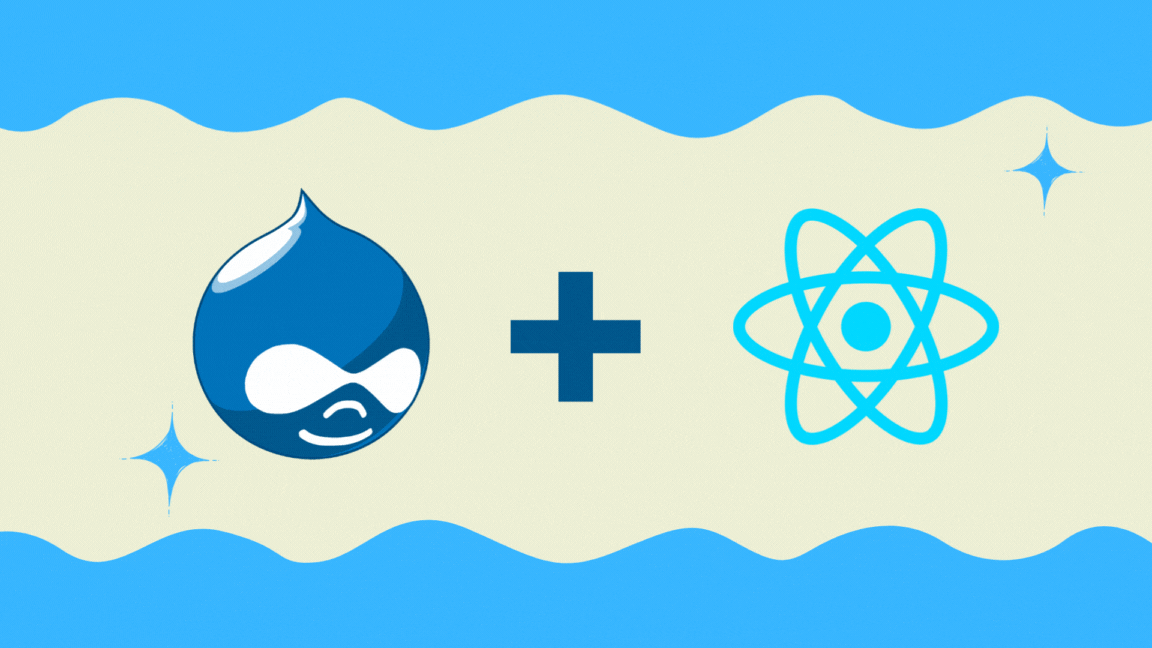
In the ever-evolving world of web development, delivering dynamic and engaging user experiences is paramount. The combination of Drupal, a powerful content management system, and React, a JavaScript library for building interactive user interfaces, has the potential to create truly dynamic web experiences. In this blog post, we'll explore the benefits, implementation, and best practices for integrating Drupal and React to achieve seamless synergy and produce outstanding web solutions.
Understanding Drupal and React
Before we delve into integration, let's briefly understand what Drupal and React bring to the table.
Drupal is a robust content management system that empowers users to manage, organise, and publish digital content efficiently. It's renowned for its flexibility, scalability, and extensive set of modules and themes that cater to a wide range of web projects.
React, on the other hand, is a JavaScript library developed by Facebook for building interactive and responsive user interfaces. It excels at creating single-page applications and offers a Virtual DOM for efficient rendering, making it an excellent choice for dynamic web experiences.
The Benefits of Integration
Integrating Drupal and React offers several advantages:
- Rich User Interfaces: React enables the creation of highly interactive and dynamic user interfaces, enhancing the overall user experience.
- Content Management: Drupal excels at content management, making it easy to organise, edit, and publish content. This integration allows you to leverage this capability within a React-powered front end.
- Speed and Performance: By combining Drupal's robust backend with React's efficient front end, you can achieve faster page load times and smoother user interactions.
- Re-usability: React components are reusable, simplifying the development process and making maintenance more straightforward.
- Scalability: This integration is well-suited for projects of all sizes, from small websites to large enterprise solutions.
Getting Started with Drupal and React Integration
To begin integrating Drupal and React, follow these basic steps:
- Set up a Drupal project: Start by setting up your Drupal environment. You'll need Drupal 8 or later.
- Create a React application: Develop your React front end using Create React App or a similar tool.
- Connect with APIs: Establish API endpoints in Drupal to provide data to your React application.
- Embed React components: Integrate React components into Drupal templates or content types.
Building Dynamic Components
With React, creating dynamic components is a breeze. You can build interactive features such as forms, sliders, or real-time data displays. These components can be embedded within Drupal content to provide a dynamic user experience. Here's a sample code snippet for creating a simple React component:
import React from 'react';
function DynamicFeature() {
// Your dynamic component code here
}
export default DynamicFeature;Data Management and API Integration
Drupal offers a robust content management system, making it easy to create and manage content. You can use Drupal's RESTful web services to expose content via APIs. React can then fetch this data and display it in your web application. This approach allows for seamless data synchronisation between Drupal and React.
Case Studies
Let's explore a couple of real-world examples to understand how organisations have successfully integrated Drupal and React:
- Example 1: E-commerce Website - A popular e-commerce site integrated Drupal for product management and React for a dynamic shopping cart and user interface. The result was a fast and interactive shopping experience.
- Example 2: Educational Platform - An educational platform used Drupal to manage course content and React to create a responsive and interactive learning environment for students.
These case studies showcase the versatility and effectiveness of Drupal and React integration.
Performance Optimisation
For optimal performance, consider implementing techniques like lazy loading, code splitting, and caching. These strategies help ensure your integrated Drupal and React application runs smoothly and efficiently.
Future Developments
The landscape of web development is ever-evolving. Keep an eye on future developments, including new Drupal features and React updates, to stay at the forefront of web technology.
Conclusion
Integrating Drupal and React offers a potent combination for creating dynamic and engaging web experiences. Whether you're developing a corporate website, e-commerce platform, or a content-rich web application, this integration can take your project to the next level. By harnessing Drupal's content management capabilities and React's dynamic user interfaces, you can deliver web solutions that captivate and delight your audience.
So, why wait? Start exploring Drupal and React integration for your next web project and witness the seamless synergy that can transform your digital presence.
References
Add new comment